Santa Barbara’s Seniors Brace Themselves for ‘Global Boiling’
CEC Forum Focuses on How Central Coast Elders Can Prepare for Extreme Heat Events
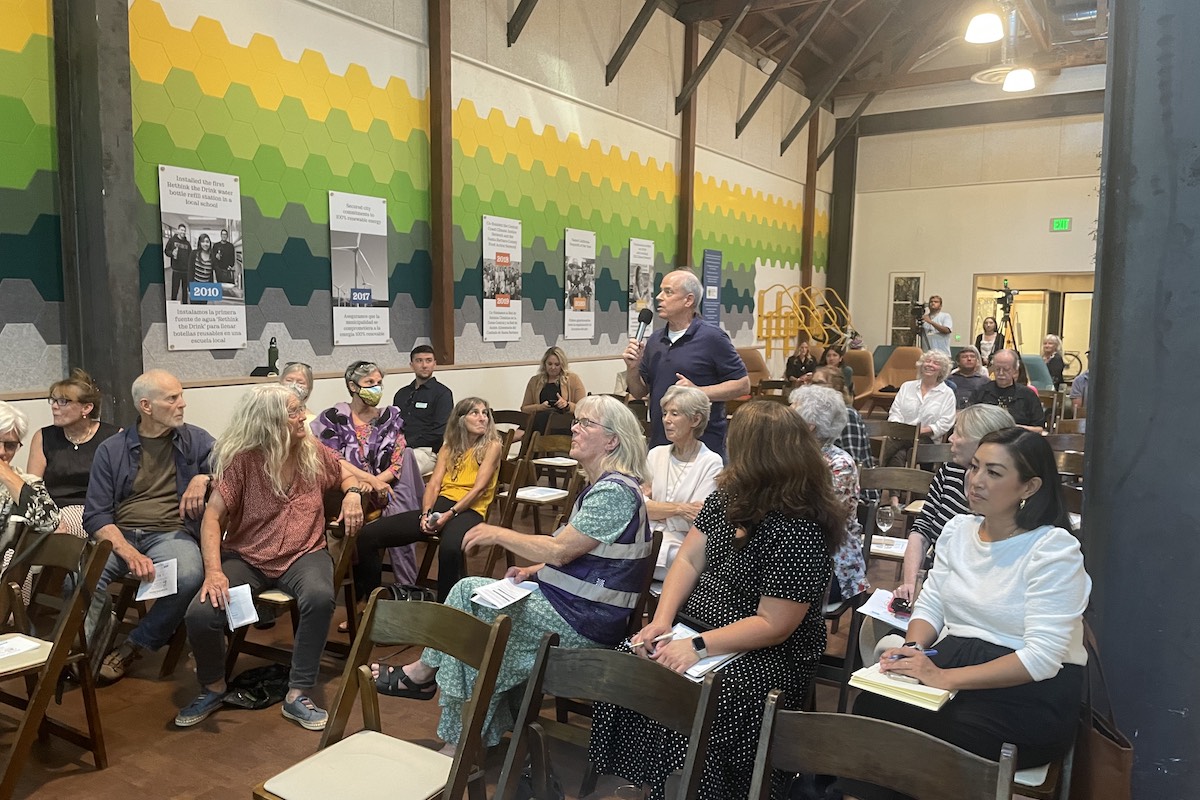
Find the rest of our 2023 Active Aging Guide here.
Santa Barbara and Ventura are the fastest-warming counties in the continental United States, putting the region’s most vulnerable — including agricultural workers, Native Americans, youth, and the elderly — at risk. But as the Central Coast gets hotter, the region’s seniors are learning how to stay cool.
“How can we, as a group of individuals, or fearless elders, make a difference?” asked Maureen Ellenberger, a member of the Society of Fearless Grandmothers Santa Barbara, at the Community Environmental Council’s (CEC) extreme heat forum on Tuesday.
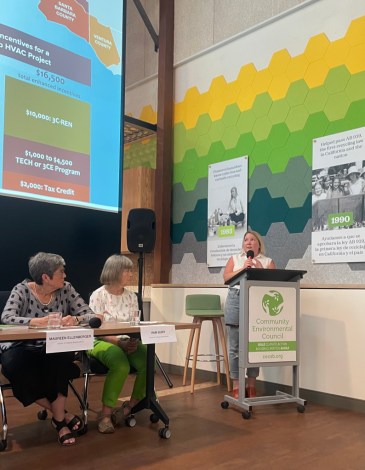
The forum — presented in partnership with the Fearless Grandmothers and the Gray Panthers Santa Barbara Network — was focused on how Central Coast elders can prepare for extreme heat events, as well as take action toward a more climate-resilient future. About 30 people attended the in-person event at the CEC’s Environmental Hub, and more than 100 registered to live-stream the event on Zoom.
There’s an urban myth that if a frog is suddenly placed into a pot of boiling water, it’ll jump out, but if the water in the pot is heated gradually, the frog will let itself be cooked to death. In the case of extreme heat, the world is like that giant pot of boiling water, and humanity is the frog (if the frog were also the one turning up the heat).
Unless we learn how to cool down, extreme heat will continue to kill more people than any other climate-change hazard. Higher temperatures can also damage food crops, injure livestock, and raise the risk of wildfires.
United Nations Secretary General António Guterres has said, “The era of global warming has ended; the era of global boiling has arrived.” Santa Barbara is particularly at the mercy of higher temperatures, since residents are not used to excessive heat and many homes do not have air-conditioning.
Sweltering heat waves could be felt around the world this July, which was the hottest month ever recorded, by a wide margin. Excessive heat warnings were issued for parts of Santa Barbara County, and residents were advised to take precautions to safeguard themselves against heat stroke and related conditions.
During Tuesday’s forum, Dr. David Lebell of Gray Panthers dove into the hot topic of “Heat and the Elderly: Fighting Back.” He explained that this may be “the coolest summer for the rest of our lives,” adding that the risks of excessive heat, coupled with frequent power outages, are only going to increase.
It’s especially dangerous for seniors, many of whom are prone to medical conditions and more vulnerable to extreme temperatures. And California is aging — the state’s Department of Finance projects that about one in five Californians will be 65 or older by 2030. According to the U.S. Census Bureau, 16.7 percent of Santa Barbara County residents are 65 or older.
To stay cool and calm, and avoid boiling-frog syndrome, people should learn to recognize the common signs and symptoms of heat-related conditions in both themselves and their grandparents, such as feeling hot, dizzy, confused, nauseated, and dehydrated.
“Many people at home could be baking, and I don’t mean cookies,” Lebell said.
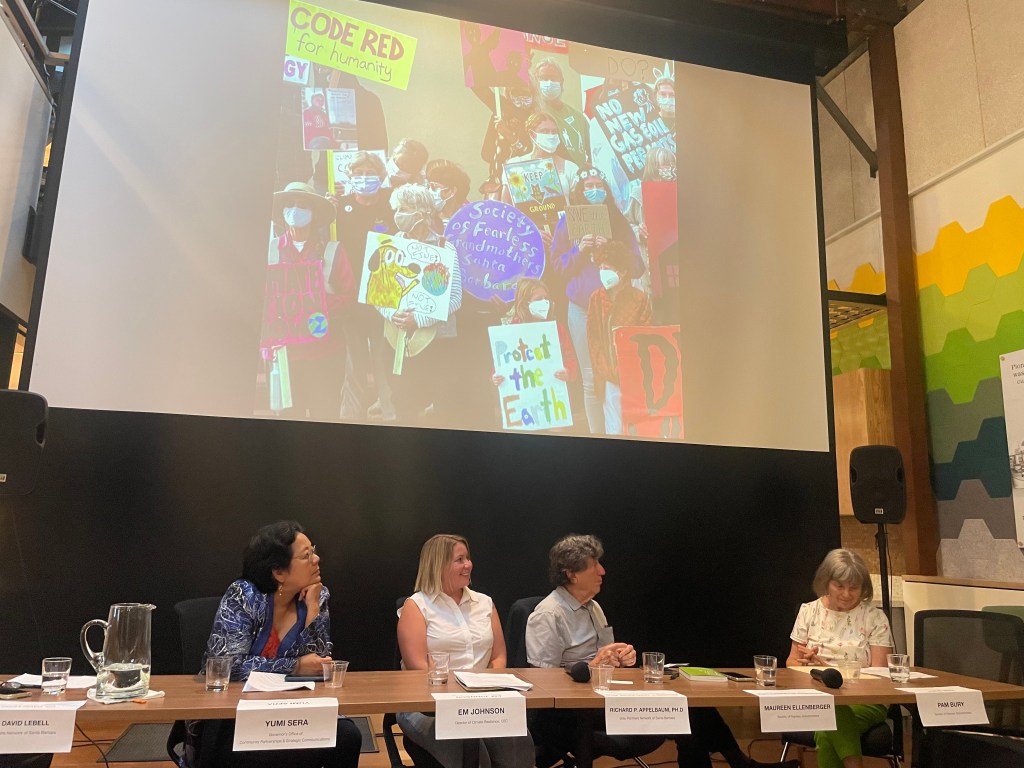
When facing extreme heat warnings, at-risk groups should evacuate if they can, or seek out a local cooling center (alongside basics such as drinking water and staying inside). In addition, Lebell advised seniors to plan a network of people who can help in the case of an extreme heat event, organize community “cooling pods” for refuge, and invest in air-conditioning, as well as backup batteries or generators if possible.
“Using more power is antithetical to what we’ve been saying about climate change,” he said; however, “we’re all in this together, and it’s getting hot out there.”
CEC Director of Climate Resilience Em Johnson said their “top idea” for beating the heat (and protecting vulnerable residents from various climate disasters) are community resilience hubs and strong neighborhood networks. The establishment of climate resilience hubs in existing community locations is underway in Santa Barbara County, to offer support before, after, and during climate-related disruptions, including acting as cooling centers, distributing food, and hosting off-grid charging during power outages, among other services.
In July, the CEC announced it was named a member of the national Extreme Heat Resilience Alliance (EHRA), and organized this summer’s extreme heat campaign.
“As a climate leader for California’s Central Coast, we recognize that without community resilience, extreme heat will continue to exacerbate the underlying inequalities within our region,” Johnson said last month. “Our vision as an EHRA partner is to reduce our region’s economic and health disparities related to the prevalence of extreme heat.”
Yumi Sera, the executive director of community partnerships and strategic communications within the Governor’s office, said that when thinking of what to say to the forum’s attendees, she thought of her mom, who retired in Goleta.
Looking at the crowd, she acknowledged that many of them have been climate activists for a long time.
“Most of the people in the room probably already know how to keep themselves safe from extreme heat,” she said. She added that the state is “extending its hand” to address heat waves and the climate crisis, and help keep Californians safe during extreme heat events through an “all-government approach.”
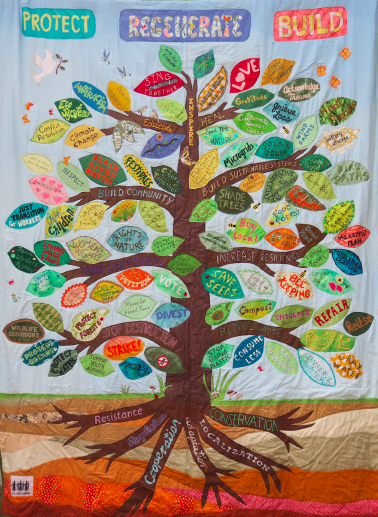
A quilt full of climate solutions stood in the hub’s center for the forum. It was created by the Fearless Grandmothers, who train in peaceful climate activism. It’s an outline in tree form, explained Fearless Grandmother Pam Bury. The roots represent necessary values, each branch shows how we can build a better future, and every leaf shows what’s being done in our community and what further actions we can take.
“We are deeply concerned about the kind of future we are leaving for our grandchildren,” said Bury, who uses her arts and crafts skills for activism. It’ll be a huge undertaking that will take a lot of cooperation, she said. She emphasized the need for divestment from fossil fuels, participation in climate groups, and establishment of community and education around climate resilience.
At the end of the forum, the grandmothers led the crowd in what may have been their “first or last climate action,” in the form of a call and response. “When our climate is under attack, what do we do?” they asked.
The answer? “Stand up and fight back.”
For statewide extreme heat resources from the Governor’s Office, visit heatreadyca.com. To learn more about Resilience Hubs and other solutions to extreme heat impacts, visit cecsb.org/resilience-hubs.

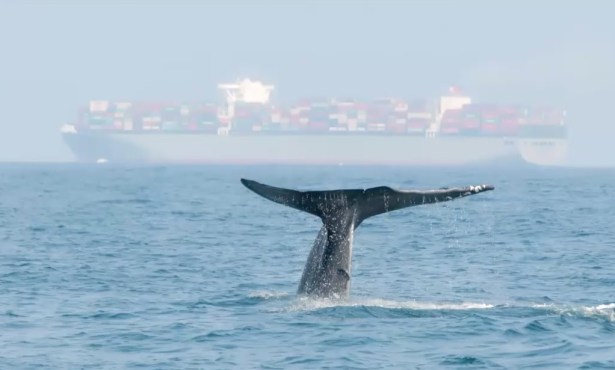
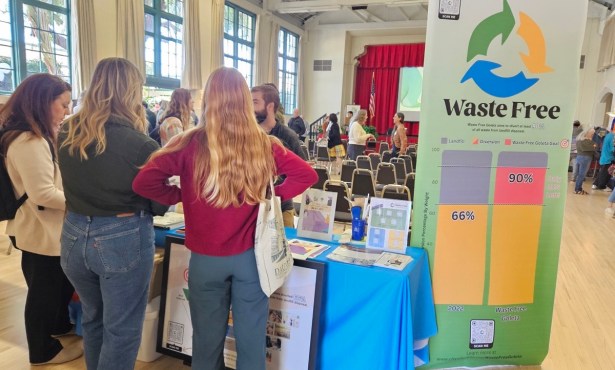
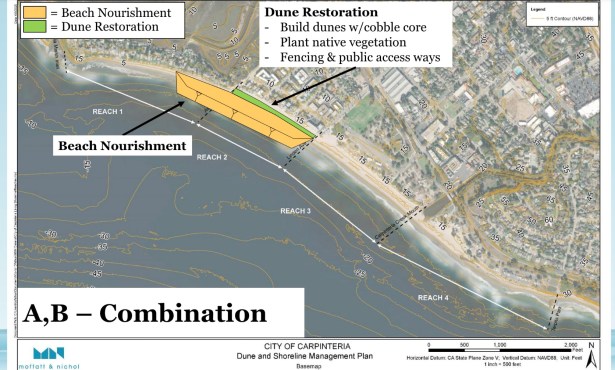
You must be logged in to post a comment.